by Martin Green
The perpetual calendar, whose primary job (if kept wound) aside from displaying the time is to show the correct date regardless of length of month, is a great example of a complication that is outdated by at least a couple of decades. Yet perpetuals still know how to capture the attention of watch collectors and connoisseurs with their very complex movements, some components only jumping into action once a year. Where a regular date display needs correcting at the end of each month with fewer than 31 days, and an annual calendar needs an adjustment every February, the perpetual calendar needs no adjustment at all if kept running.
Therefore, the perpetual calendar is often the perfect way for a watch manufacture to show off its craftsmanship and ability – but the way that brands do this varies. Some follow the classic school while others tend to innovate, sometimes by appearance and sometimes in technical approach.
At the 2019 edition of the SIHH, all these categories were present and accounted for. This was one of the many reasons why this was such a good year for the Geneva-based fair: variety is the spice of life. And that is especially true when all the different perpetual calendars have also been so well executed.
Vacheron Constantin Traditionnelle Twin Beat: traditional, but not in its technology
With the Traditionnelle Twin Beat perpetual calendar, Vacheron Constantin presents a solution to an actual problem: not wearing/winding perpetual calendars often enough to keep them continuously running. This is as pure a “first-world problem” as they come, but nevertheless something that many collectors struggle with.
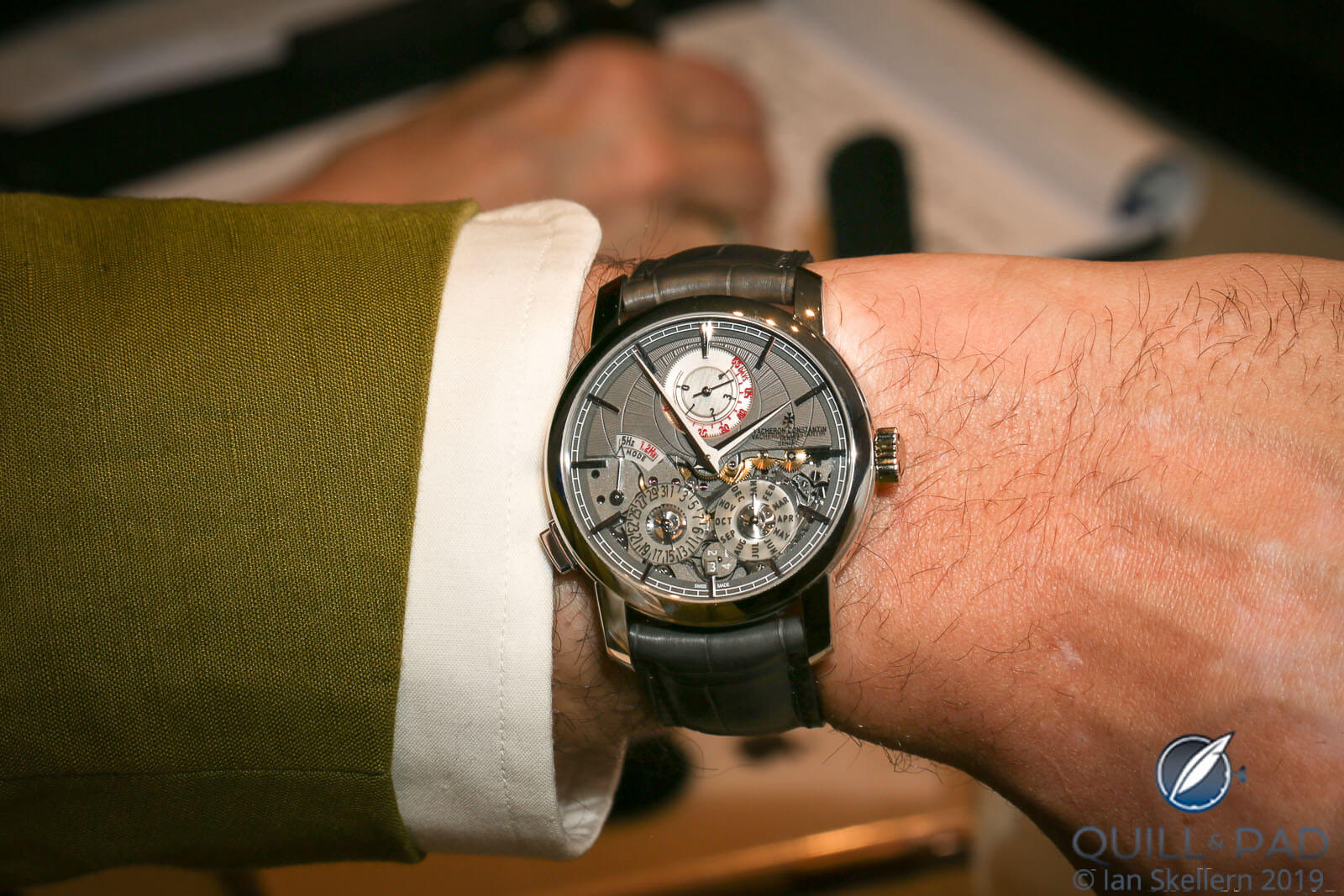
Vacheron Constantin Traditionnelle Twin Beat on the wrist
Not many people buy a perpetual calendar as a first watch, and probably even fewer people have a perpetual calendar as their only watch. That means that the perpetual calendar isn’t worn frequently and will always run down. Most watches can easily be re-set, but not perpetual calendars, which have a multitude of displays that can only be set at certain times and often using finicky correctors.
If you’re lucky, the perpetual calendar will have an automatic movement so that a watch winder can be of help, but not everybody prefers those.
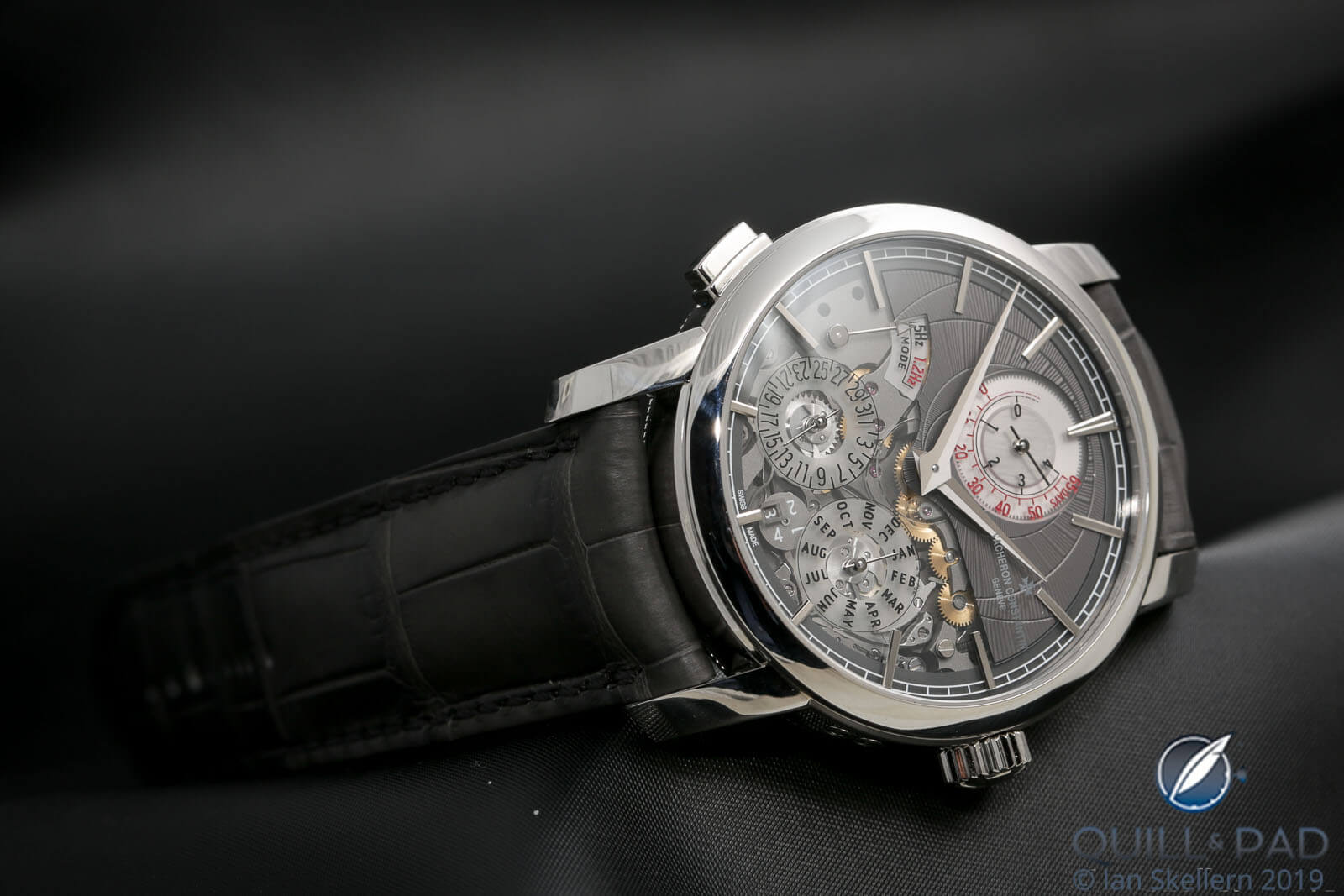
Vacheron Constantin Traditionnelle Twin Beat
Vacheron Constantin’s Twin Beat offers a bona-fide solution to this problem: take the watch off your wrist, press a pusher, and the movement jumps to a low-frequency standby mode of 1.2 Hz, enabling the watch run to for up to 65 days!
It’s no wonder this was one of the watches on the lips of many during the fair.
And while I personally find the technology behind this new watch fascinating, I was perhaps even more excited about the package in which Vacheron Constantin presented it. With a diameter of 42 mm and a height of 12.3 mm, it is extremely wearable. And that is not a thing you can always say of such novel technology.
Vacheron Constantin perhaps took perhaps a bit more of a technical approach then we are used to regarding dial design, but it is not DNA-dilutingly different as it retains many design cues from the Traditionnelle collection.
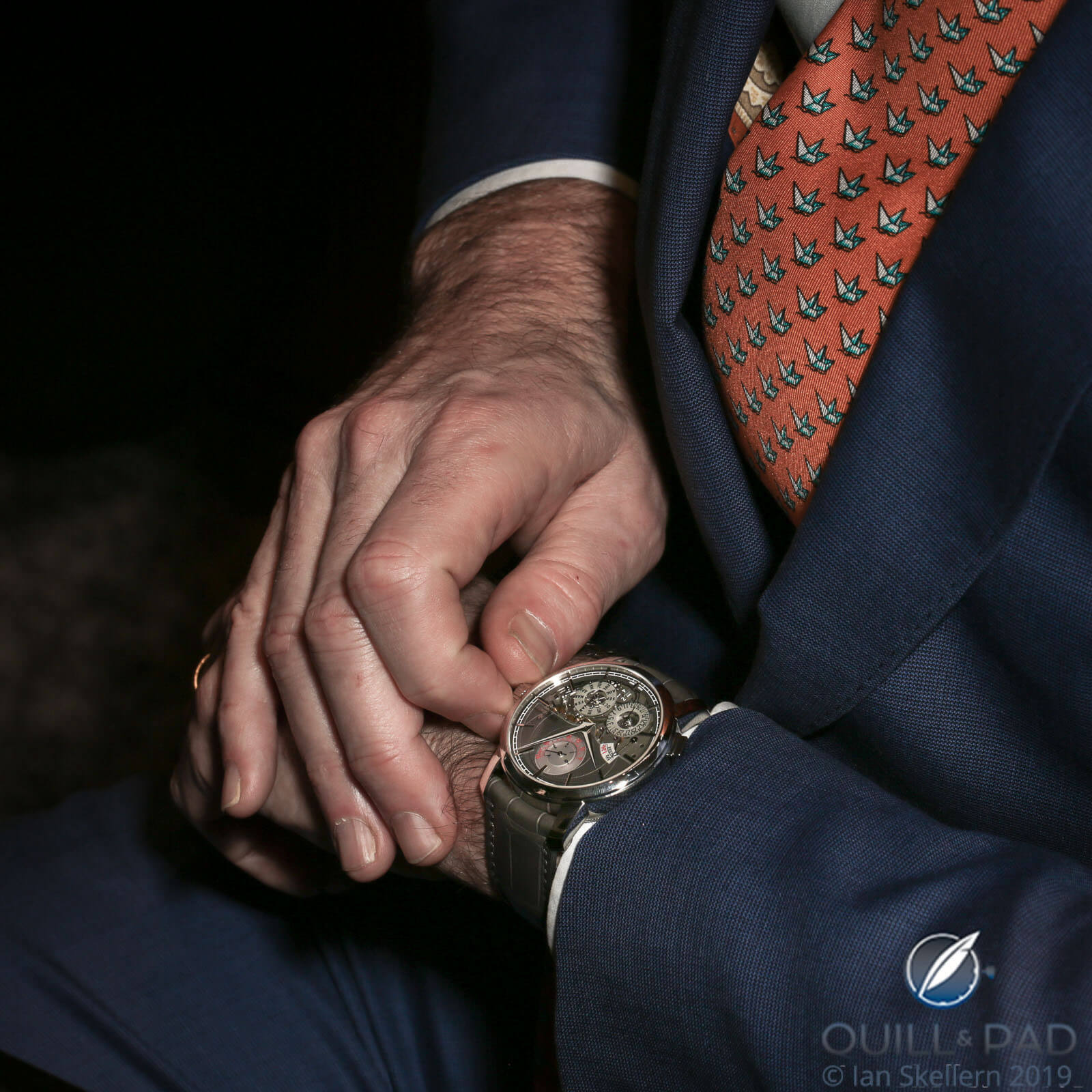
Vacheron Constantin Traditionnelle Twin Beat
The chosen look does highlight that you have something special on the wrist, and despite its relatively modest size that won’t go unnoticed by other watch connoisseurs.
See more on this groundbreaking technology in Vacheron Constantin Traditionnelle Twin Beat: User-Controlled Dual Frequency Offers Greater Precision, Less Wear, And Option Of Two-Month Power Reserve.
For more information, please visit www.vacheron-constantin.com/en2/manufacture/twin-beat.
Quick Facts Vacheron Constantin Traditionnelle Twin Beat
Case: 42 x 12.3 mm, platinum
Movement: manually wound Caliber 3610QP with user-controlled dual-frequency capability; 5 Hz/1.2 Hz frequency; up to 65-day power reserve at 1.2 Hz and four days at 5 Hz; two balances and gear trains; 480 components, Geneva Seal
Functions: hours, minutes; power reserve indication; perpetual calendar with date, month, leap year; frequency mode
Price: €210,000, boutique edition only
A. Lange & Söhne Saxonia Langematik Perpetual: the German is in the details
Where the Vacheron Constantin Traditionnelle Twin Beat prides itself on its innovative movement, there is nothing under the hood of the new Langematik Perpetual from A. Lange & Söhne that we haven’t seen before.
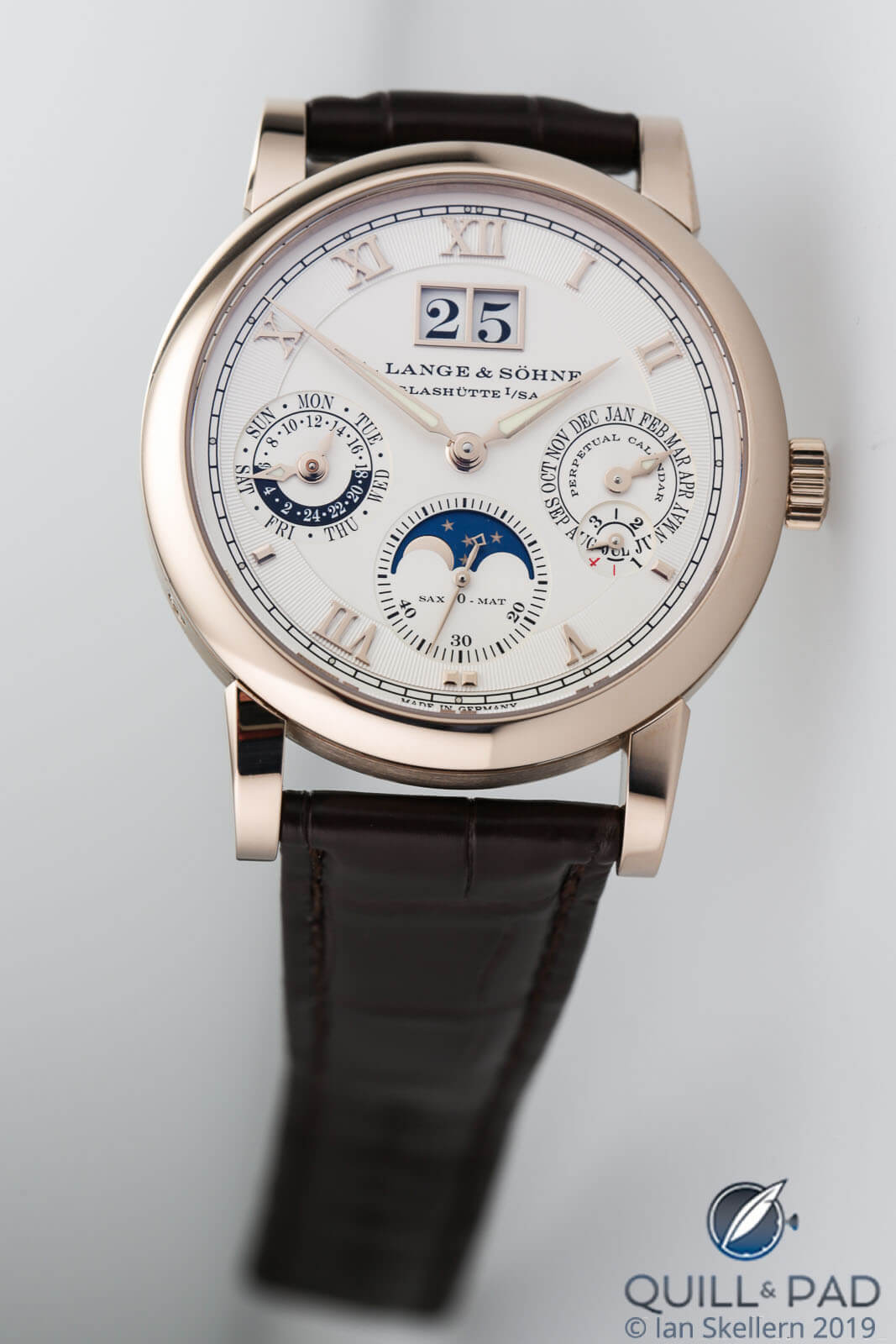
A. Lange & Söhne Saxonia Langematik Perpetual
Among the other SIHH introductions from A. Lange & Söhne this model could easily be overlooked, yet I sucked in my breath when the watch was presented to me. To explain this, we first have to take a step back.
In general, the Langematik Perpetual is among my favorite watches from the brand and is even in my top five favorite perpetual calendars of all time.
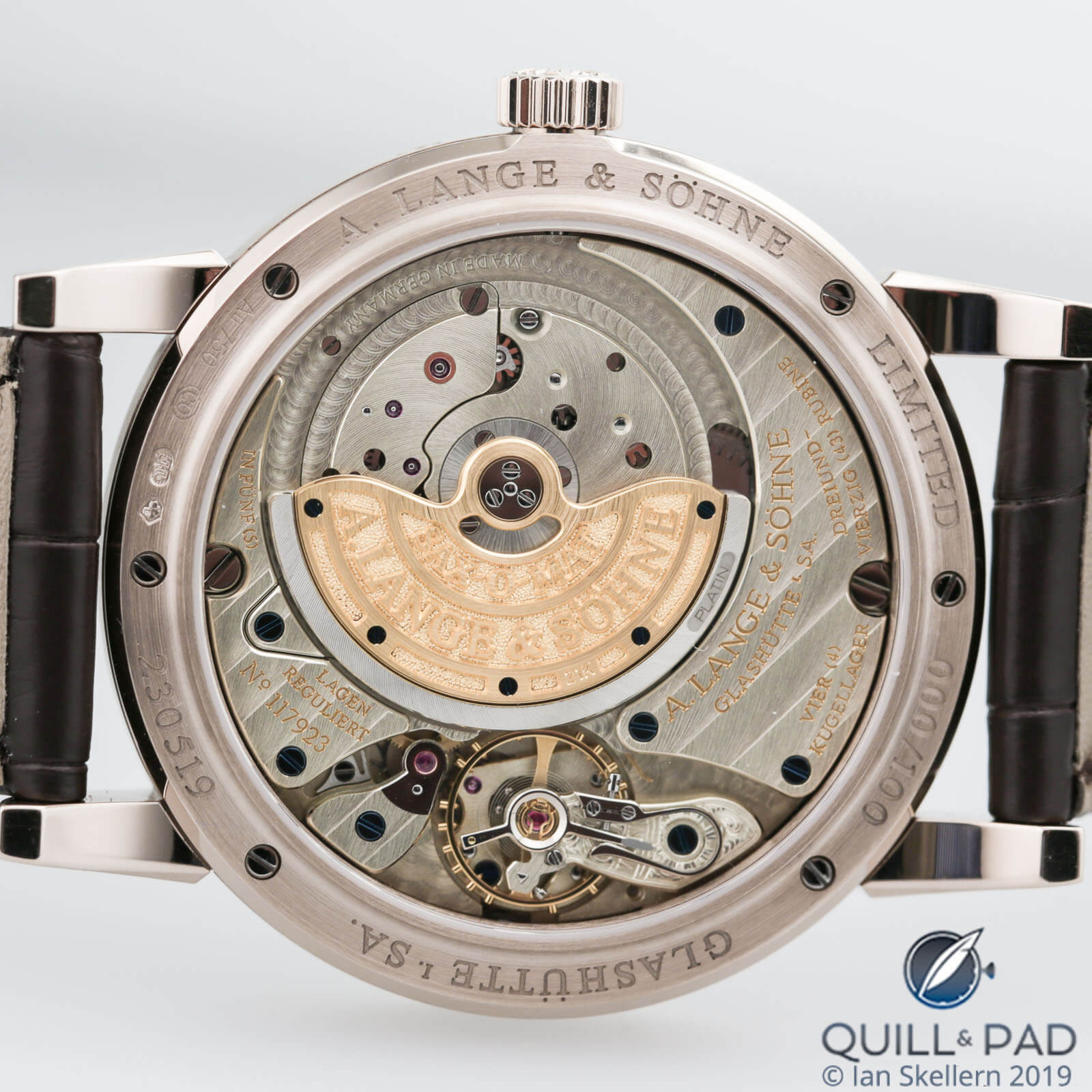
View through the display back to the movement of the A. Lange & Söhne Saxonia Langematik Perpetual
There is, of course, the movement, screaming craftsmanship, which I especially like because of its offset rotor. When it comes to perpetual calendars, I have a strong preference for automatic movements as that technology makes more sense to me.
However, it is not the movement alone that makes me favor this watch; its proportions are also perfect. With a case diameter of 38.5 mm, it sits nicely on the wrist but also leaves a bit of the strap visible when you look down at it.
The height of 10.2 mm is also downright perfect, as it provides the watch with enough substance in the way you experience and interact with it, but doesn’t hinder you in any way.
The dial layout is organized and classic, yet with enough twists to keep it interesting. The leap year indicator that cuts into the month subdial as well as the 24-hour function, which shares its space with the hand showing days, all contribute to this.
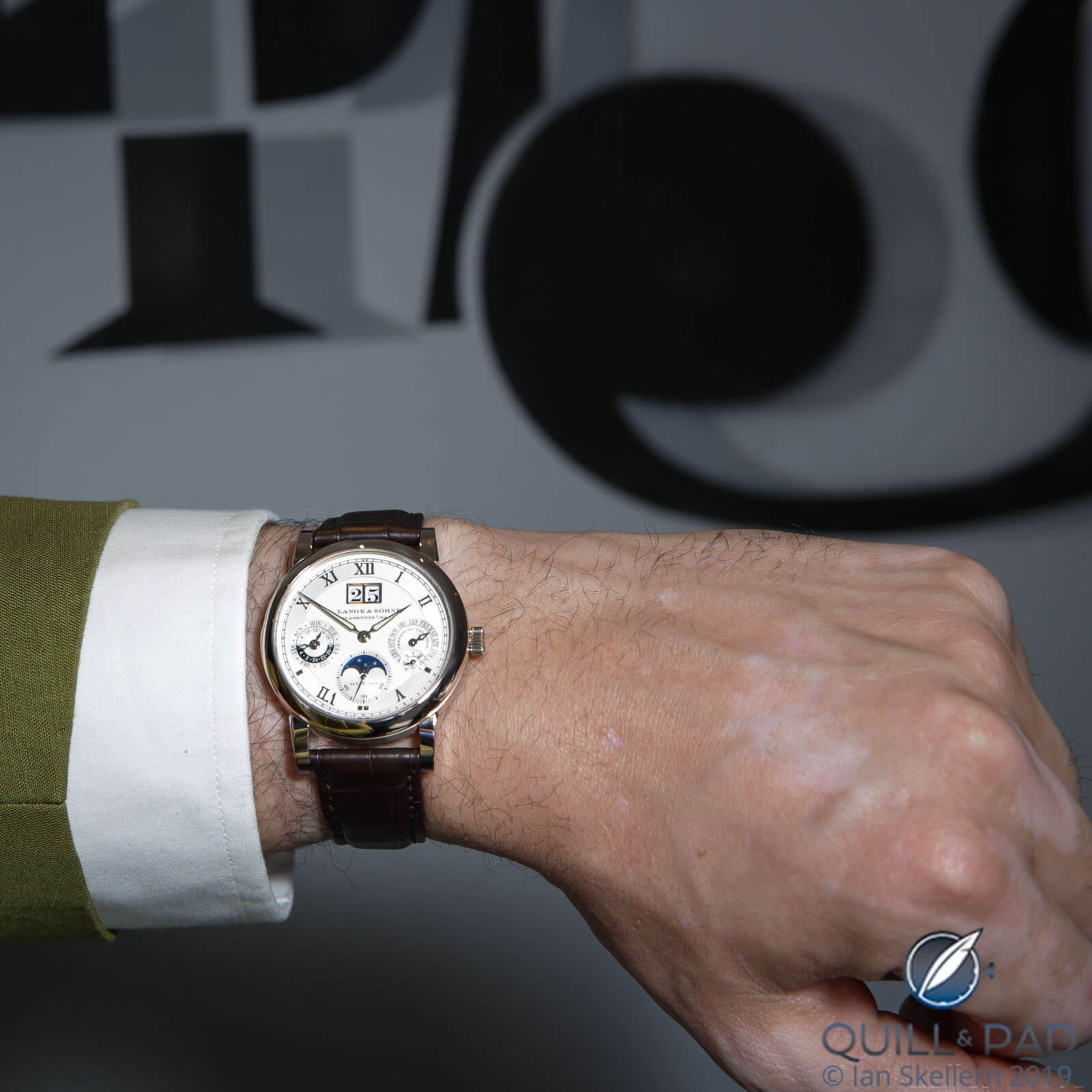
A. Lange & Söhne Saxonia Langematik Perpetual on the wrist
So what made the latest version of the Langematik Perpetual so different? The case made in the brand’s proprietary Honeygold in combination with the embossed outer ring upon which the Roman numerals have been applied.
Both are details, some might even consider them minor, but for me they made the watch even more impressive. The Honeygold has just the right hue for the solid silver dial, while the embossed outer ring adds to its classic appearance with slightly more depth to the dial design.
This is the highest echelon of watchmaking, and here such details matter!
For more information, please visit www.alange-soehne.com/en/timepieces/langematik-perpetual-honeygold.
Quick Facts A. Lange & Söhne Saxonia Langematik Perpetual
Case: 38.5 x 10.2 mm, Honeygold
Movement: automatic Caliber L922.1 Sax-O-Mat; 3 Hz/21,600 vph frequency, three-quarter plate in German silver, three-quarter rotor, balance cock engraved by hand, 46-hour power reserve
Functions: hours, minutes, hacking seconds with zero reset; perpetual calendar with large date, weekday, month, moon phase, leap year, and day/night indicator
Limitation: 100 pieces
Price: €84,000
Girard-Perregaux Laureato Perpetual Calendar: in, gasp, non-precious metal!
For me, Girard-Perregaux has always been delightfully different, and the new Laureato Perpetual Calendar is a perfect example of this!
The Laureato has never been able to join the ranks of the stainless steel sports icons like the Audemars Piguet Royal Oak and the Patek Philippe Nautilus in terms of popularity. This might have something to do with the fact that when it was first launched in 1975, it was as a quartz watch.
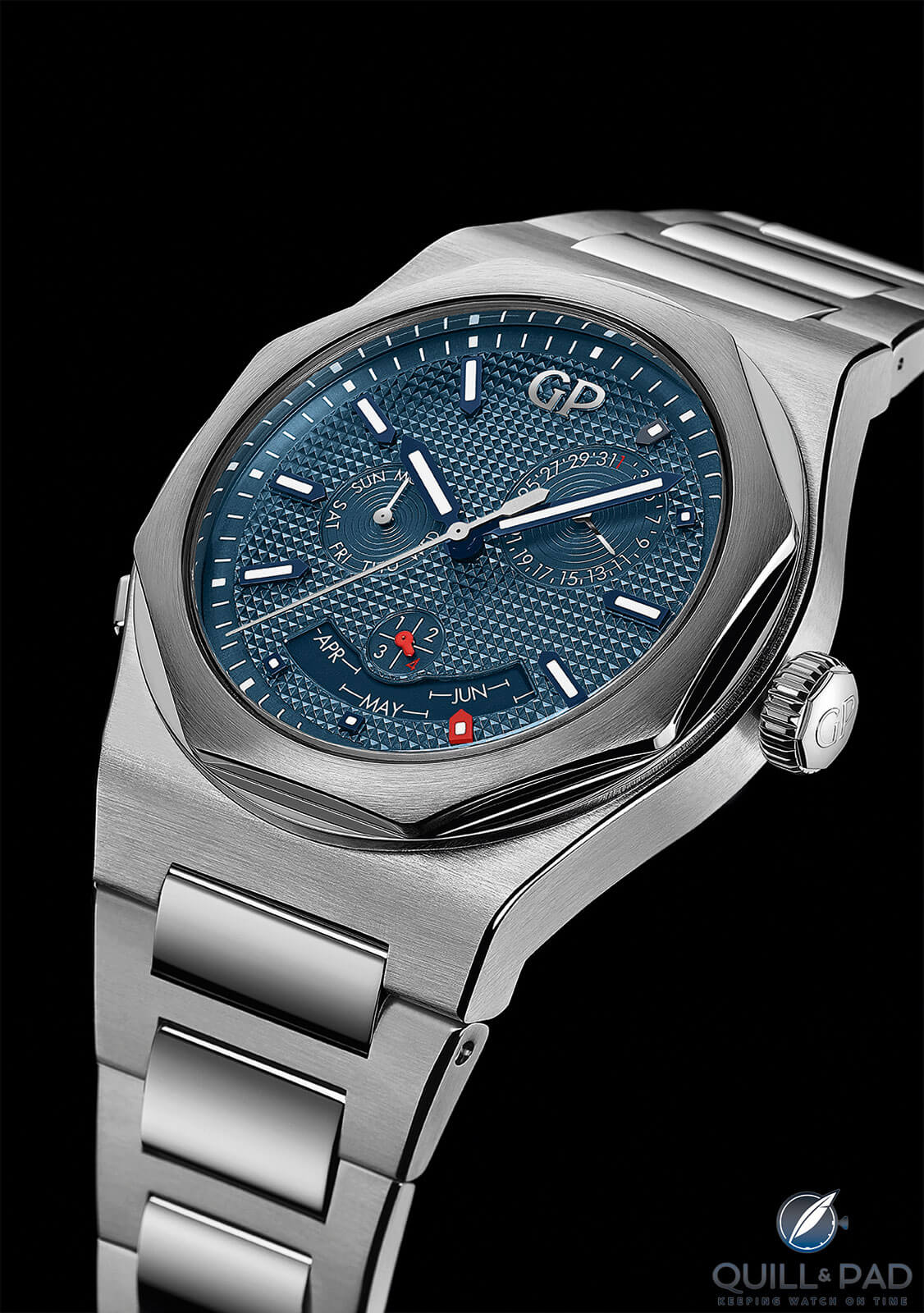
Girard-Perregaux Laureato Perpetual Calendar
While still frowned upon today, Girard-Perregaux was one of the very few Swiss watchmakers that embraced quartz movements early on – and with great success. The optimum frequency still used in 99 percent of all quartz movements produced today was established by Girard-Perregaux, and even movement expert Jaeger-LeCoultre was so impressed by the first quartz calibers of Girard-Perregaux that the manufacture bought them to use in their own watches.
It wasn’t until 1984 that a mechanical movement became available in the second generation of this stainless steel sports watch. Its design fits right in with its iconic 1970s compatriots, though: it is clean, powerful, and features an integrated bracelet.
The Laureato is perhaps a bit more under the radar than the other watches, but that has benefits, not the least of which is that this gives the clous de Paris pattern on the dial the perfect stage to shine.
Over the years this dial has elevated itself to become one of the hallmarks of the watch.
The new Laureato Perpetual Calendar also has plenty of clous de Paris to enjoy on the dial in addition to the quirkiness that especially the sportier Girard-Perregaux models so often possess.
No traditional layout for this watch, which is dominated by three subdials that not only are placed seemingly at random on the dial but are also all different sizes. It shouldn’t work, but somehow it does.
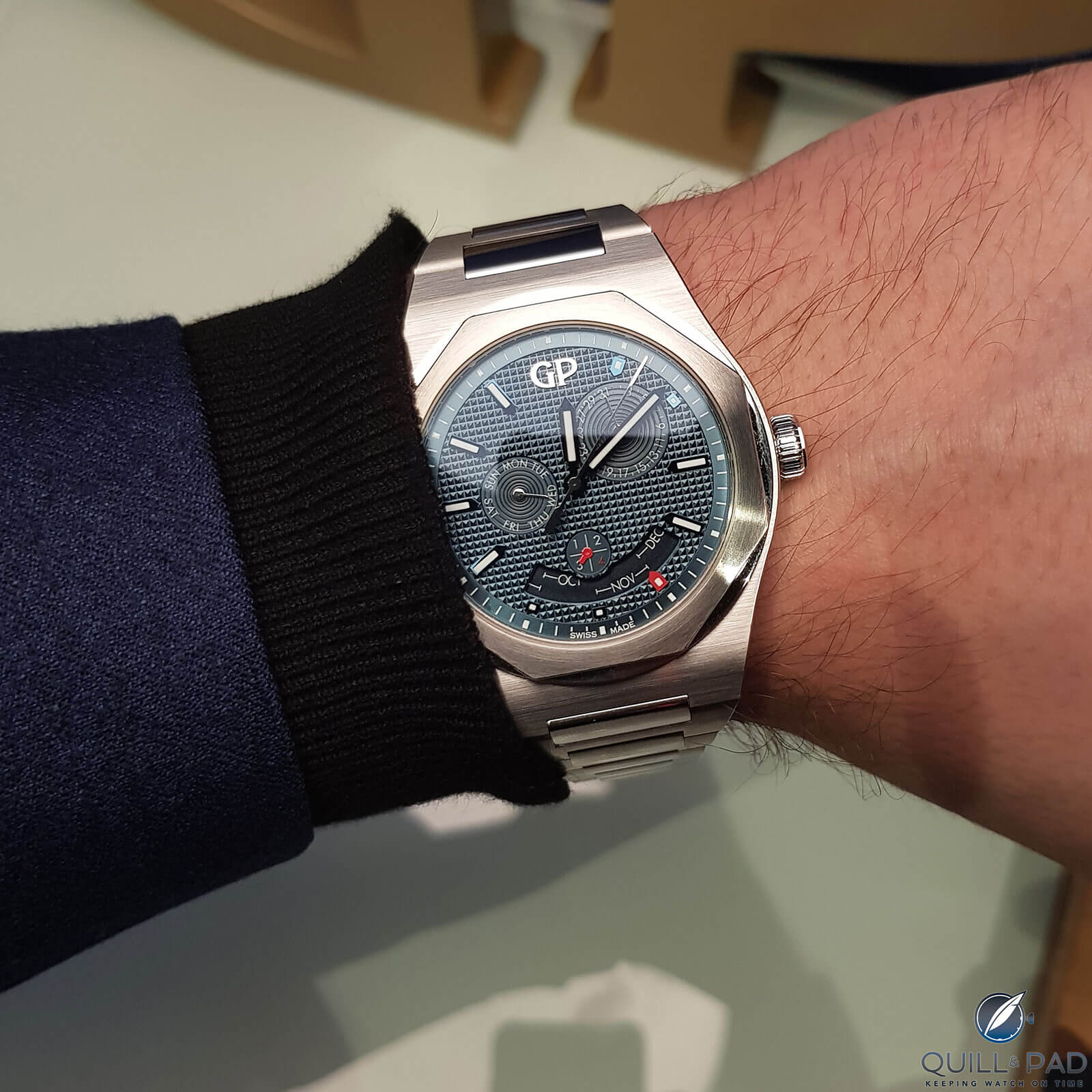
Girard-Perregaux Laureato Perpetual Calendar on the wrist (photo courtesy Łukasz Doskocz)
The same can be said for the way that Girard-Perregaux decided to indicate the month: a large, asymmetrical cutout between 4 and 7 o’clock displays the months, while the red hour marker at 5 o’clock does double duty by also pointing to the current month. Indicating the months this way is greatly beneficial as a simple glance gives you some idea where in the month we are without having to read the exact date on the subdial.
Some might consider such a dial layout messy, but Girard-Perregaux has always had a knack for making it work.
Many high-end stainless steel sports watches make some concessions to their sporty side once complications are incorporated, but not this Laureato! Its stainless steel case is still a modest 42 mm in diameter, and at a height of 11.84 mm it is pleasantly slender. This is mainly thanks to automatic Caliber GP01800-0033, which is only 6.06 mm high.
Notable is also its water resistance of 100 meters, which is most unusual for a perpetual calendar, probably because the majority of the brands think that due to their prestigious complication most owners won’t take it near the water anyway.
All this combined makes the Laureato Perpetual Calendar a very versatile watch and a perfect choice for people who like a more original take on a traditional complication.
For more information, please visit www.girard-perregaux.com/en/laureato/laureato-perpetual-calendar.
Quick Facts Girard Perregaux Laureato Perpetual Calendar
Case: 42 x 11.84 mm, stainless steel
Movement: automatic Caliber GP01800-033, 4 Hz/28,800 vph frequency, 54 hours power reserve
Functions: hours, minutes, seconds; perpetual calendar with day, date, month and leap year indicators
Price: $34,400
You may also enjoy:
Hermès Arceau L’Heure De La Lune: And Pegasus Flies On The Moon
Lange & Söhne Lange 1 25th Anniversary Edition: Celebrating A Quarter Century Of Asymmetrical Cool
Armin Strom Dual Time Resonance Sapphire: Totally Transparent Synchronicity
Jaeger-LeCoultre Master Ultra Thin Moon Enamel: Once In A Blue Moon
Leave a Reply
Want to join the discussion?Feel free to contribute!





















































Beautiful pieces, thank you for the article! Does the wristshot of the GP Laureato display the date “November 31st,” or is that a funky glare on the front glass?
You may well be right!